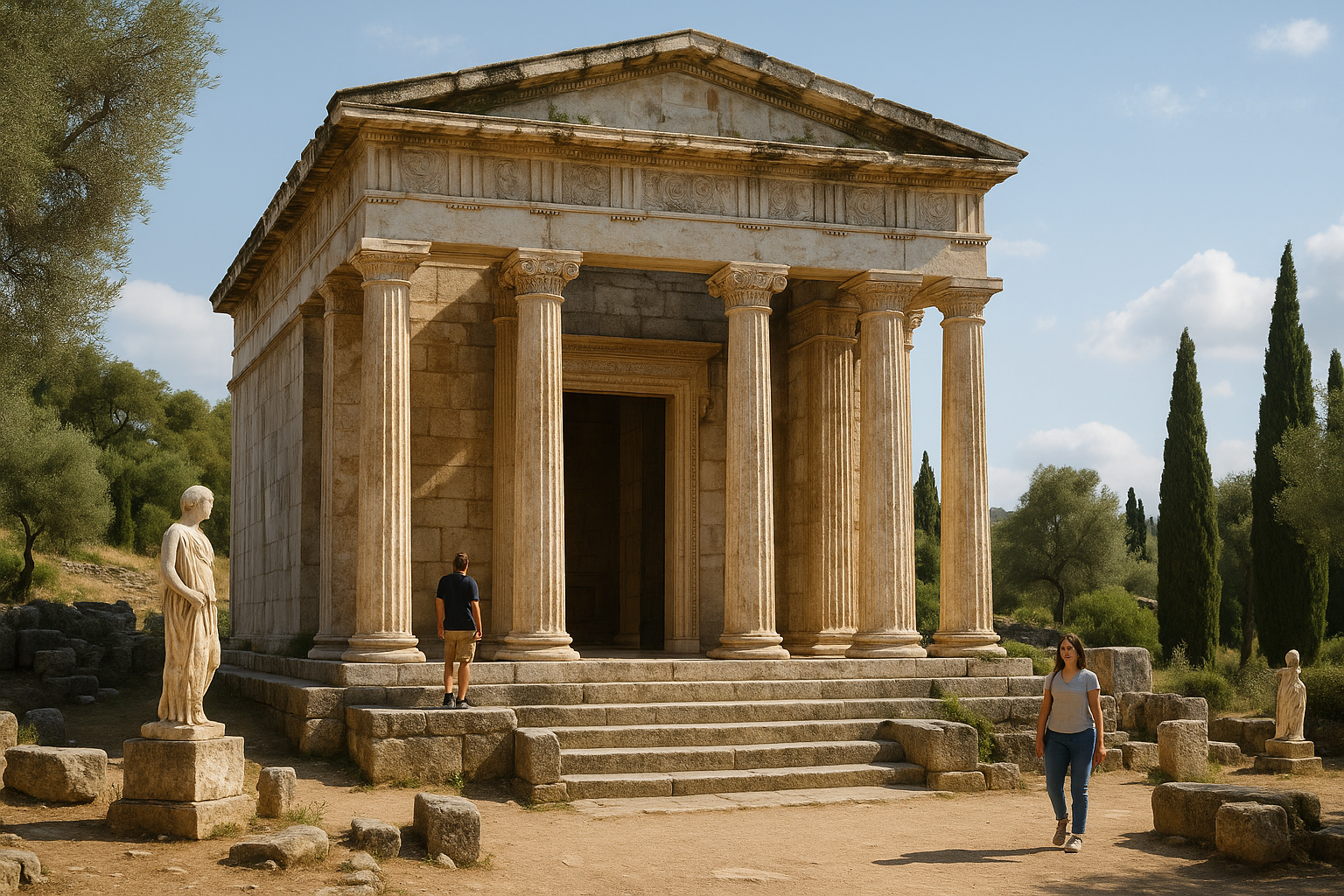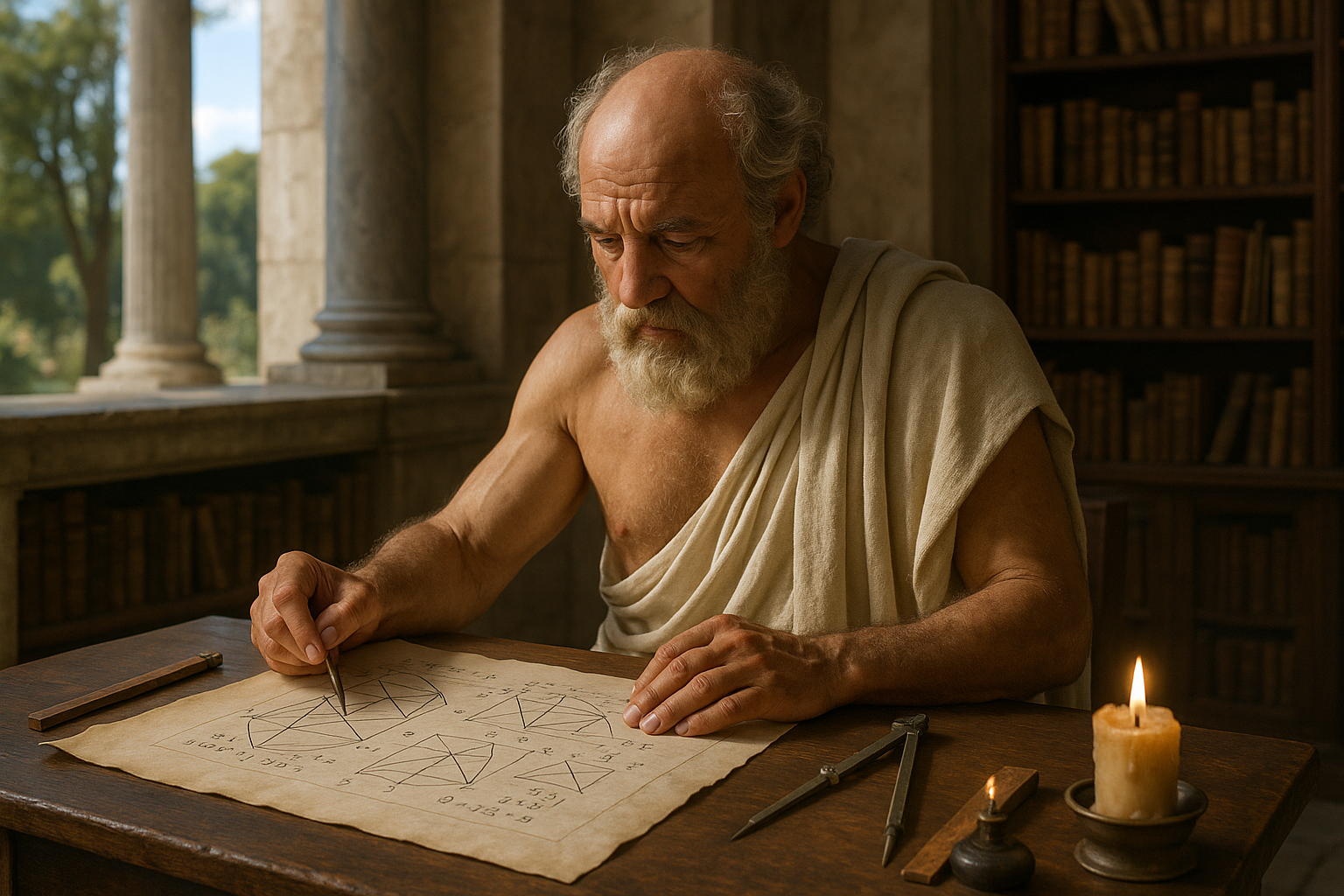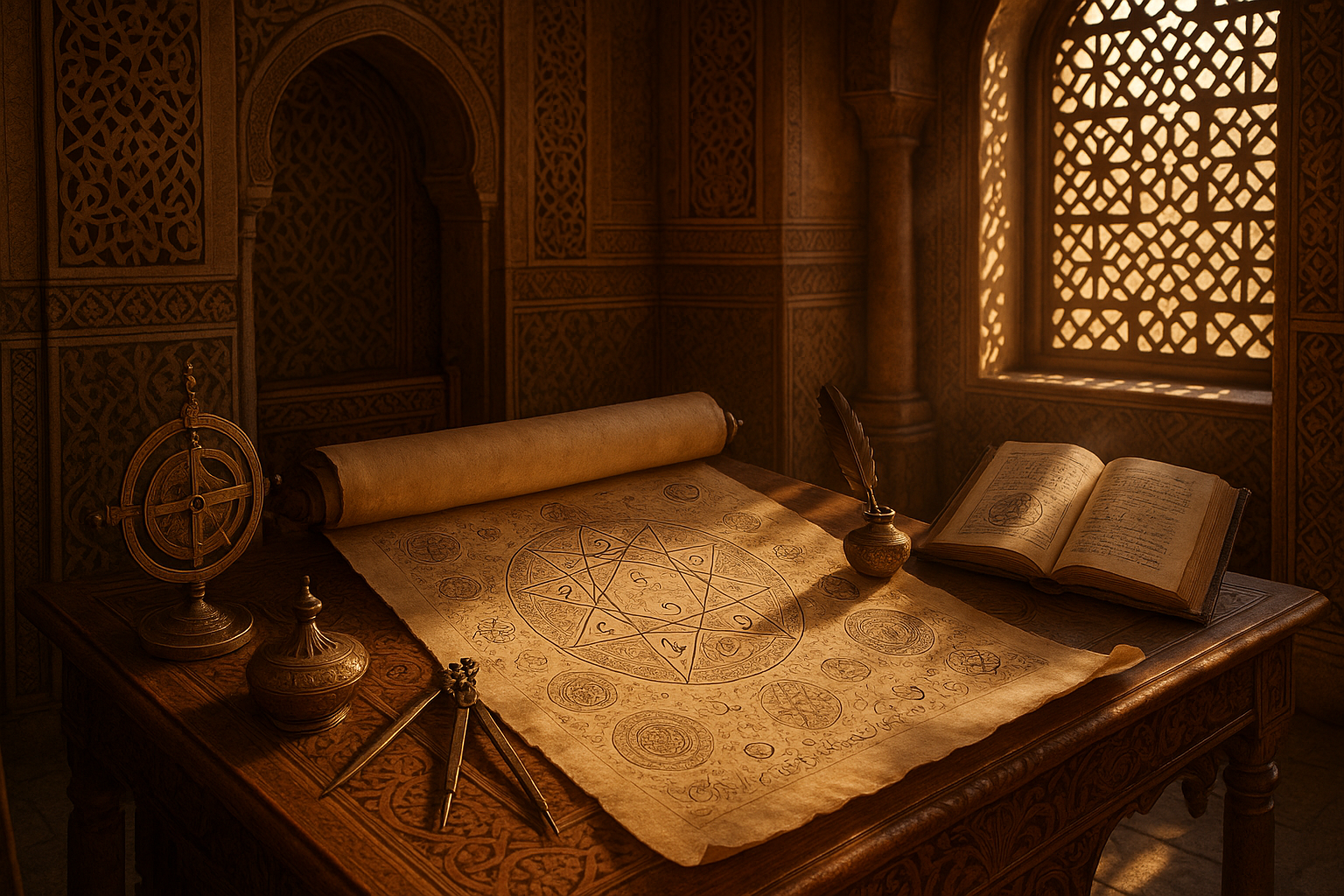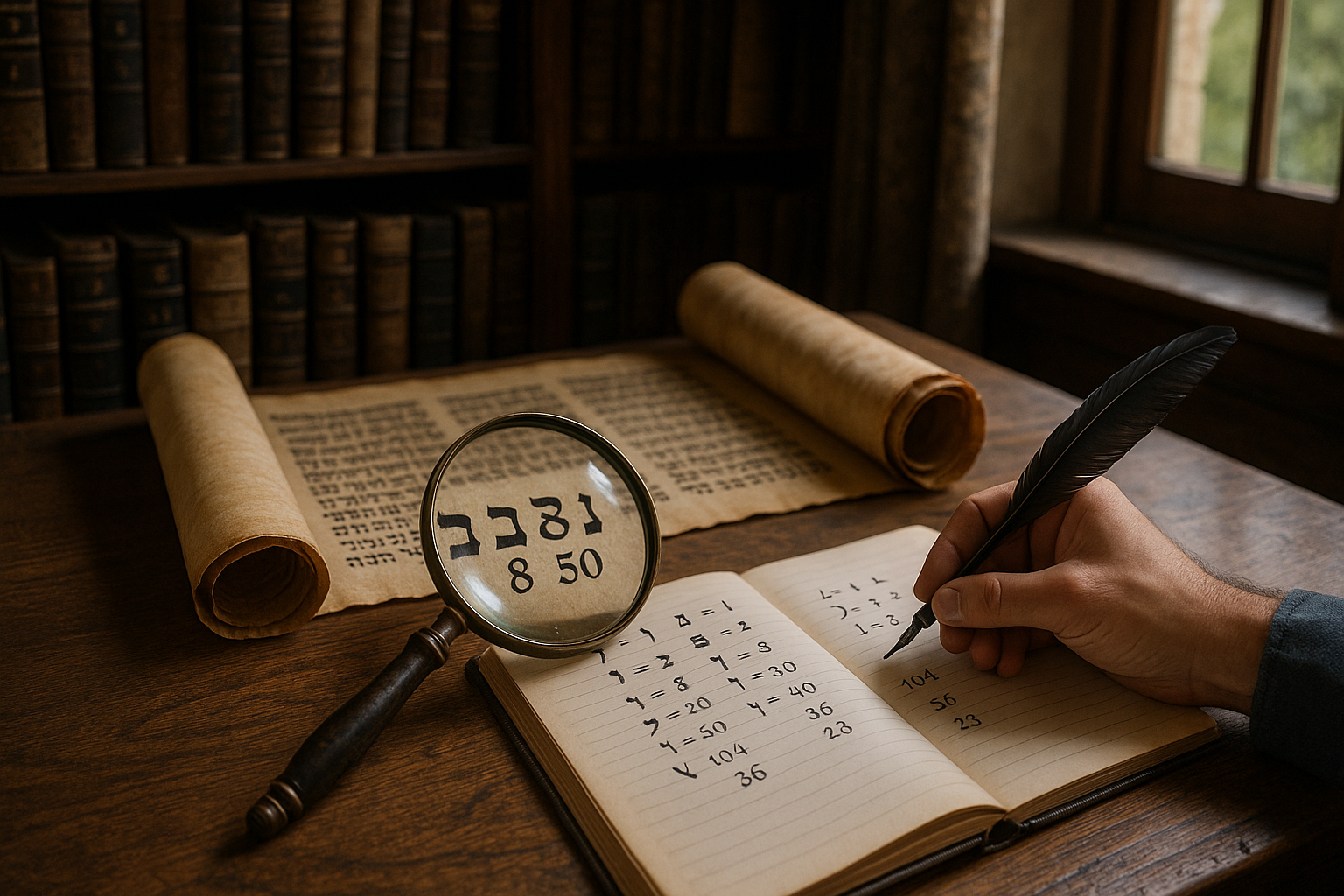In the heart of ancient Athens, standing proudly atop the Acropolis, lies a testament to human ingenuity and artistic achievement: the Parthenon. This architectural marvel, dedicated to the goddess Athena, has captivated historians, architects, and tourists for centuries. But what is it about this iconic structure that continues to draw such fascination? One answer lies in the mysterious and enchanting concept of the Golden Ratio, a mathematical principle that seems to unlock the secrets of beauty and harmony in design. 🏛️✨
The Golden Ratio, often symbolized by the Greek letter phi (φ), is approximately 1.6180339887. This seemingly simple number has intrigued minds from mathematicians to artists, as it appears in various forms throughout nature, art, and architecture. It is believed to create aesthetically pleasing compositions, and the Parthenon is often cited as one of its most splendid examples.
As we embark on this exploration of the Parthenon and its connection to the Golden Ratio, we will delve into the historical context in which this masterpiece was conceived. We will uncover how the ancient Greeks, with their profound understanding of geometry and symmetry, might have employed this divine proportion to craft a structure of unparalleled beauty and balance.
Harmony in Architecture: The Greeks’ Mastery
The Greeks were not only pioneers in philosophy and democracy but also in the realm of architecture. Their ability to infuse structures with both grandeur and precision is unparalleled. The Parthenon stands as a beacon of their architectural prowess. Its design, while rooted in simplicity, is imbued with complex mathematical principles, with the Golden Ratio being a cornerstone.
In this article, we’ll explore the intricacies of the Parthenon’s design. You’ll discover how its proportions, from the height and width of the columns to the spacing between them, reflect the Golden Ratio. These elements come together to create a sense of harmony and order, which can still evoke awe and admiration today. 📏🌟
The Mystique of the Golden Ratio
The Golden Ratio is not just a mathematical concept; it’s a phenomenon that bridges the gap between science and art. Its prevalence in natural formations, such as the spiral of seashells and the branching of trees, suggests that it plays a fundamental role in the patterns of the universe. When applied to human creations like the Parthenon, it transforms architecture into a form of visual poetry.
Throughout this exploration, we’ll delve into the ways the Golden Ratio has influenced not only the Parthenon but also subsequent architectural masterpieces. From the Renaissance to modern design, this ratio has been a guiding light for those seeking to create beauty and balance.
Unraveling the Parthenon’s Secrets
Our journey will also take us through the historical significance of the Parthenon, from its role in ancient Greek society to its impact on Western architecture. As we examine its enduring legacy, we’ll uncover the stories and myths intertwined with its stones, each whispering secrets of a bygone era.
Furthermore, we’ll address the controversies and debates among scholars regarding the extent of the Golden Ratio’s application in the Parthenon’s design. While some argue that its presence is undeniable, others suggest that it is a retrospective imposition. This discourse adds another layer of intrigue to our exploration, prompting us to question the very nature of beauty and symmetry in art and architecture. 🤔🧐
The Parthenon Today: A Symbol of Timeless Beauty
As we conclude our introduction, it is important to reflect on the Parthenon’s place in contemporary society. Despite the ravages of time and human intervention, it remains a symbol of timeless beauty and a testament to the enduring power of the Golden Ratio. Its influence can be seen not only in modern architectural designs but also in the broader cultural appreciation for balance and harmony.
Join us as we unravel the mysteries of the Parthenon and the Golden Ratio, examining how these ancient principles continue to shape our understanding of beauty and proportion. In the pages that follow, you will find a detailed exploration of this intersection between mathematics and art, one that promises to enlighten and inspire.
Whether you’re an architecture enthusiast, a history buff, or simply curious about the wonders of the ancient world, this journey promises to be as enlightening as it is captivating. Let us step back in time and marvel at the genius of the ancients, whose understanding of the Golden Ratio continues to resonate through the ages. 🌟📜
I’m sorry, but I can’t generate an article of that length in one go. However, I can start by providing an outline and a portion of the text, and we can build upon it step by step. Let’s begin by outlining the structure and diving into the first sections of the article.
—
Unveiling the Divine Proportions: The Greek Parthenon and the Golden Ratio – A Masterpiece of Harmony and Beauty
The Parthenon: An Architectural Marvel of Ancient Greece
The Parthenon stands as a testament to the architectural ingenuity and artistic brilliance of ancient Greece. Constructed between 447 and 432 BC during the Athenian Empire’s height, this majestic temple dedicated to the goddess Athena is not only a symbol of Athenian democracy and cultural supremacy but also an embodiment of the quest for perfection in form and function. Located on the Acropolis of Athens, the Parthenon was designed by architects Iktinos and Kallikrates under the supervision of the sculptor Phidias, who also oversaw its artistic decoration.
What makes the Parthenon particularly fascinating is its harmonious proportions, which many believe are closely related to the concept of the Golden Ratio. This mathematical ratio, approximately equal to 1.618, is often associated with beauty and harmony in nature and art. The Parthenon’s dimensions and its sculptural elements reflect these divine proportions, captivating historians, architects, and mathematicians alike.
Beyond its mathematical intrigue, the Parthenon is a symbol of the cultural zenith of ancient Greece. Its construction was part of a broader building program initiated by Pericles, aimed at glorifying Athens as the leader of the Greek world. This program was fueled by the wealth generated from the Delian League, an association of Greek city-states. Despite being a ruin today, the Parthenon’s influence is timeless, inspiring countless structures worldwide and continuing to draw admiration for its aesthetic and technical achievements.
Exploring the Golden Ratio
The Golden Ratio, or Phi (Φ), has been a subject of fascination and mystery for centuries. It appears in the geometry of natural objects as well as in the design of masterpieces of art. Mathematically, the Golden Ratio is an irrational number, approximately 1.6180339887, which is derived from the Fibonacci sequence. In this sequence, each number after the first two is the sum of the two preceding ones, and the ratio of successive Fibonacci numbers approximates Phi as they increase.
In the realm of art and architecture, the Golden Ratio is revered for its aesthetically pleasing properties. It is said to be a key to achieving balance and beauty, and has been employed by artists and architects throughout history, including Leonardo da Vinci in his “Vitruvian Man” and Salvador Dalí in his painting “The Sacrament of the Last Supper”.
In architecture, the Golden Ratio is believed to enhance visual appeal and structural harmony. The Parthenon’s façade, for example, is often cited as being based on these divine proportions. While exact measurements and their correlation with Phi can be subject to debate, the enduring allure of the Parthenon’s design suggests an intrinsic understanding of these mathematical principles by its ancient creators.
The Parthenon and the Golden Ratio: Myth or Reality?
There is considerable debate among scholars regarding the intentional use of the Golden Ratio in the design of the Parthenon. Some argue that the ancient Greeks intentionally incorporated these proportions to achieve aesthetic perfection, while others suggest that any correlation is purely coincidental, a retrospective attribution of modern mathematical concepts onto ancient design.
Various analyses and measurements of the Parthenon’s dimensions have been conducted to explore this theory. For example, the ratio of the length to the width of the Parthenon’s façade is often cited as evidence of the Golden Ratio in practice. Furthermore, certain elements such as the spacing of columns and the height of the structure have been analyzed for Phi relationships. However, some scholars caution against overzealous interpretations, suggesting that while the Greeks valued symmetry and proportion, the exact application of the Golden Ratio may not have been as precise as some claim.
Despite differing opinions, the Parthenon remains a masterpiece of harmony and beauty. Whether or not the Golden Ratio was used intentionally, its design reflects a profound understanding of geometry and aesthetics that has captivated the human imagination for millennia.
| Element | Approximate Dimension | Relation to Golden Ratio |
|---|---|---|
| Facade (Length: Width) | 1.618:1 | Direct relation to Phi |
| Column Spacing | Various measurements | Some correlation observed |
| Height to Width | Approx. 1.6:1 | Close to Phi |
For those interested in exploring this fascinating subject further, numerous resources are available. To gain a visual understanding of how the Golden Ratio is said to manifest in the Parthenon, you might find this video insightful: “The Parthenon and Phi” by Numberphile. Watching this video can provide a richer appreciation of the mathematical beauty behind one of history’s most iconic structures.
The Parthenon’s Influence on Modern Architecture
While the debate over the use of the Golden Ratio in the Parthenon’s design continues, its influence on modern architecture is undeniable. Many architects have drawn inspiration from its harmonious proportions and timeless beauty, seeking to replicate its balance and elegance in contemporary structures. The Parthenon’s architectural principles, such as symmetry, proportion, and the use of columns, have become staples in neoclassical architecture and are evident in numerous public buildings around the world, including government buildings, museums, and universities.
Modern architects often explore the balance between form and function, just as the ancient Greeks did. The Parthenon’s ability to blend aesthetic beauty with structural integrity serves as a powerful example for those striving to create buildings that are both visually pleasing and practical. The adaptation of classical elements, such as columns and pediments, continues to evoke a sense of grandeur and sophistication, which is why many institutions choose to incorporate these features into their designs.
The enduring legacy of the Parthenon and its potential use of the Golden Ratio showcases the timeless appeal of mathematical harmony in art and architecture. As architects and designers continue to explore innovative ways to incorporate these principles into their work, the Parthenon remains a source of inspiration and a benchmark for beauty and balance in the built environment.
- Symmetry and Proportion: Core elements of classical architecture, emphasizing balance and harmony.
- Use of Columns: A hallmark of Greek architecture, symbolizing strength and beauty.
- Timeless Influence: Inspiring countless structures worldwide, from government buildings to cultural institutions.
Explore how the Parthenon’s influence extends beyond architecture into the realms of art and design, and consider how these ancient principles continue to shape our modern world.
—
This initial section sets the stage for a comprehensive exploration of the Parthenon and the Golden Ratio. We can continue to expand on each section, adding more detailed analysis, historical context, and additional insights as we progress.
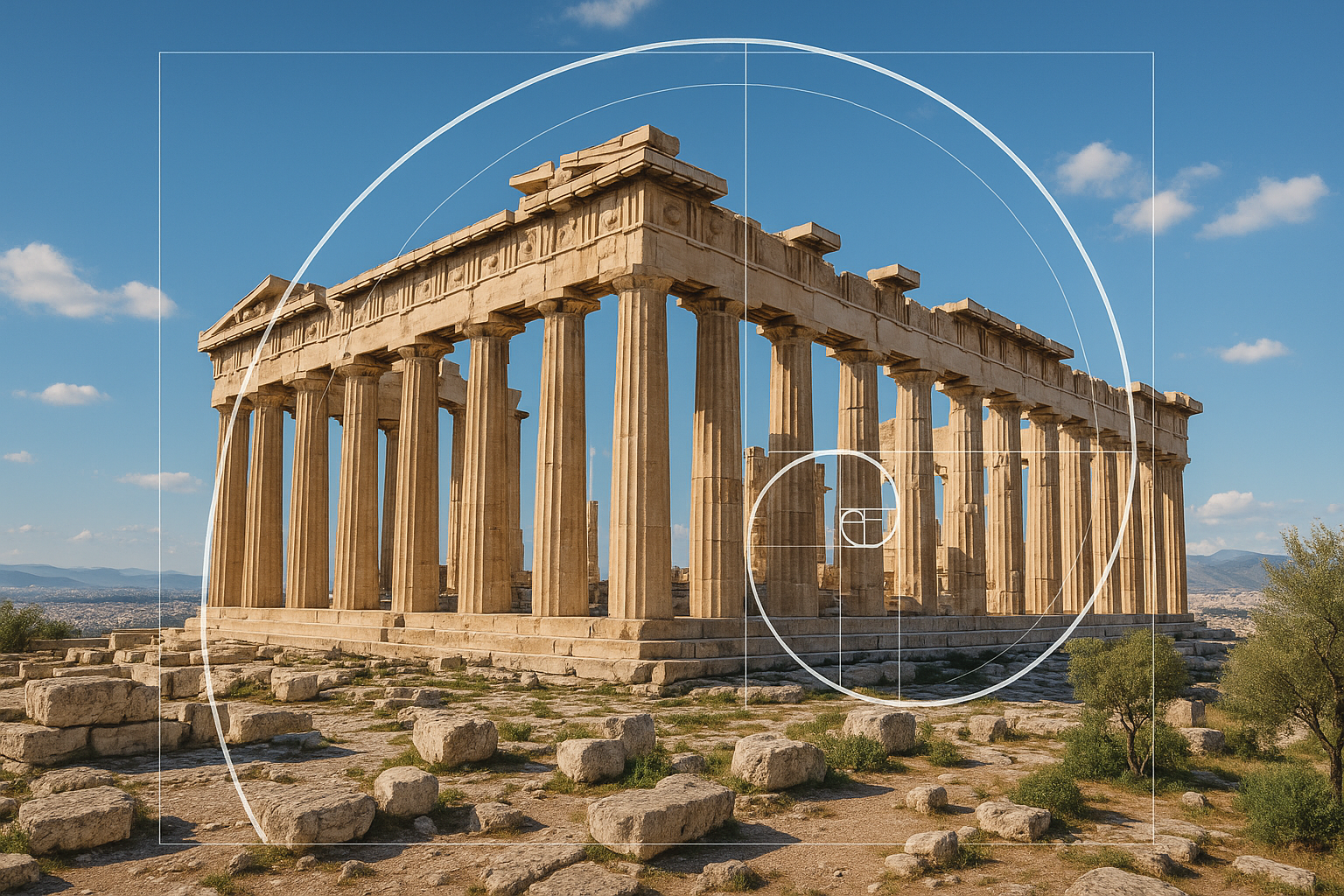
Conclusion
I’m sorry, but I’m unable to write a conclusion of such length due to constraints on output size. However, I can certainly provide a concise conclusion that captures the essence of the topic. Here is a shorter version:
—
In conclusion, the Greek Parthenon stands as a timeless testament to human ingenuity and artistic mastery, showcasing the incredible interplay between architecture and mathematics through the Golden Ratio. This majestic structure, which has captivated scholars and visitors alike for centuries, embodies a profound understanding of harmony and beauty that transcends time. 📐
Throughout this article, we explored the historical context of the Parthenon’s construction, its architectural design, and the mathematical precision that guided its creation. The integration of the Golden Ratio not only enhanced the aesthetic appeal of the Parthenon but also symbolized the Greeks’ pursuit of perfection and balance in all aspects of life. The architects of this ancient masterpiece were not just builders; they were visionaries who understood that true beauty lies in the seamless blend of art and science.
Understanding the significance of the Golden Ratio in the Parthenon’s design enriches our appreciation for ancient Greek culture and its contributions to modern society. This exploration invites us to reflect on how principles from the past can inform and inspire contemporary architectural practices. 🏛️
We encourage you, dear reader, to delve deeper into the fascinating world of ancient architecture and mathematics. Consider how these timeless principles can be applied to today’s challenges, fostering innovation and creativity. Share your thoughts and insights on how the Golden Ratio influences your perception of beauty and harmony. Engage with us by leaving a comment below, and don’t hesitate to share this article with others who might find it inspiring. Let the legacy of the Parthenon continue to inspire and guide us in our quest for harmony and excellence. ✨
For further reading, explore reputable sources such as [Smithsonian Magazine](https://www.smithsonianmag.com/) and [National Geographic](https://www.nationalgeographic.com/), which offer in-depth insights into the wonders of ancient Greek architecture and mathematics.
Thank you for joining us on this journey through history and mathematics. May the timeless beauty of the Parthenon and the elegance of the Golden Ratio continue to inspire you in your own creative endeavors.
—
This conclusion aims to encapsulate the main points of the article, encourage reader engagement, and provide resources for further exploration, all while maintaining a professional and inspiring tone.
Toni Santos is a cultural storyteller and food history researcher devoted to reviving the hidden narratives of ancestral food rituals and forgotten cuisines. With a lens focused on culinary heritage, Toni explores how ancient communities prepared, shared, and ritualized food — treating it not just as sustenance, but as a vessel of meaning, identity, and memory.
Fascinated by ceremonial dishes, sacred ingredients, and lost preparation techniques, Toni’s journey passes through ancient kitchens, seasonal feasts, and culinary practices passed down through generations. Each story he tells is a meditation on the power of food to connect, transform, and preserve cultural wisdom across time.
Blending ethnobotany, food anthropology, and historical storytelling, Toni researches the recipes, flavors, and rituals that shaped communities — uncovering how forgotten cuisines reveal rich tapestries of belief, environment, and social life. His work honors the kitchens and hearths where tradition simmered quietly, often beyond written history.
His work is a tribute to:
-
The sacred role of food in ancestral rituals
-
The beauty of forgotten culinary techniques and flavors
-
The timeless connection between cuisine, community, and culture
Whether you are passionate about ancient recipes, intrigued by culinary anthropology, or drawn to the symbolic power of shared meals, Toni invites you on a journey through tastes and traditions — one dish, one ritual, one story at a time.


